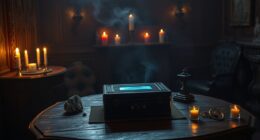To prepare for a haunted house investigation, start by researching the property’s history to uncover its mysteries. Gather essential equipment like EMF meters and spirit boxes while ensuring safety with first aid kits and flashlights. Conduct a risk assessment to identify hazards and plan for emergencies. Use effective investigation techniques, like logging data and employing sensory deprivation. And remember, understanding what to do next can elevate your investigation experience even further.
Key Takeaways
- Research the property’s history, including original owners, architectural features, and significant past events, to gain context for the investigation.
- Gather essential equipment, such as EMF meters, digital voice recorders, and first aid kits, ensuring all tools are in working order.
- Conduct a thorough risk assessment to identify hazards and develop a safety plan to minimize injury during the investigation.
- Utilize various investigation techniques, including controlled experiments and sensory deprivation methods, to enhance the likelihood of detecting paranormal activity.
- Document and analyze findings meticulously, comparing results against historical records to identify patterns or unusual phenomena related to reported hauntings.
Researching the Property’s History
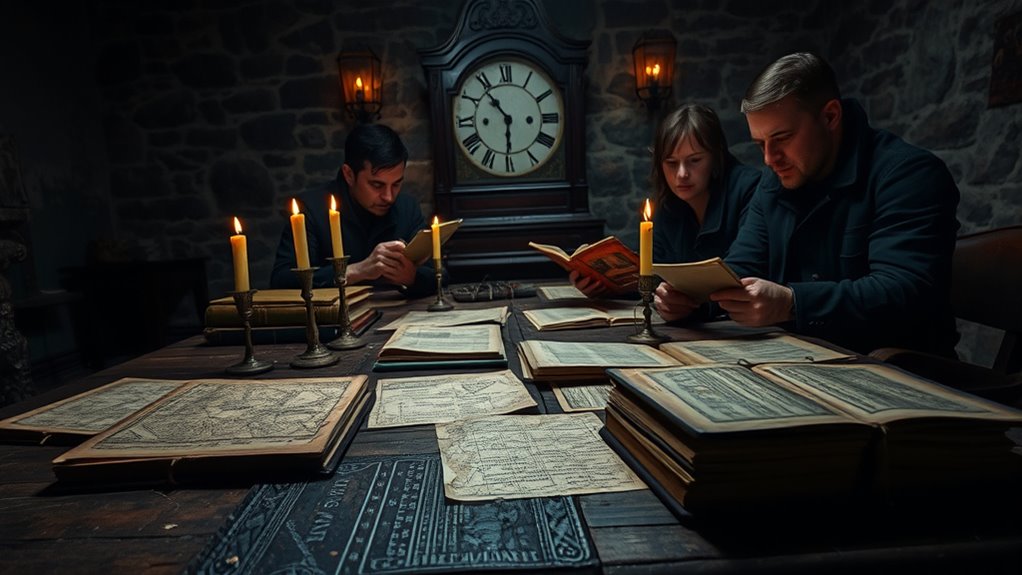
When you’re preparing for a haunted house investigation, researching the property’s history is essential. Start by identifying the original owner and their background.
Understand why the house was built and the historical context surrounding its construction. Document its original layout and architectural features to appreciate its significance.
Explore past occupants and note any significant events like births, deaths, or renovations that may have shaped the property’s spirit. Look into local records and historical societies for detailed information.
Consider interviewing long-time community members to gain insights and gather archival photos for visual context.
This foundational knowledge not only enriches your investigation but also helps you connect with the location’s haunting tales and legends.
Essential Equipment and Safety Preparations
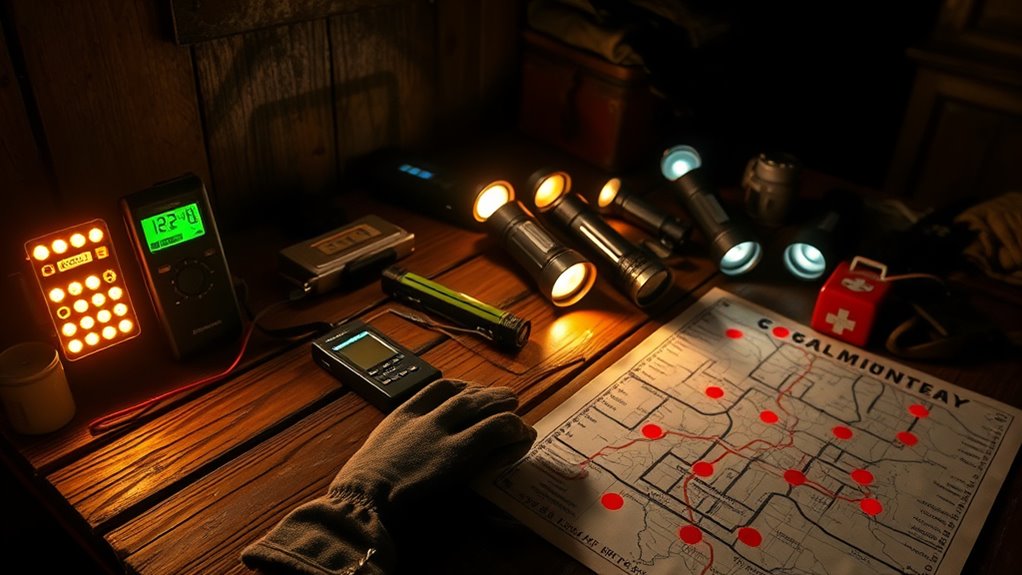
To guarantee a successful haunted house investigation, it’s vital to equip yourself with the right tools and prioritize safety preparations.
Start with an EMF meter to detect electromagnetic field changes and a digital voice recorder for capturing EVPs. An infrared thermometer can help identify temperature fluctuations, while night vision cameras allow for low-light recordings. Don’t forget a spirit box for potential spirit communication.
For safety, pack a first aid kit for minor injuries and bring flashlights for visibility. Fire extinguishers are important for addressing hazards, and communication devices keep you connected with your team.
Finally, confirm emergency exits are marked and accessible, and conduct safety briefings to prepare everyone for the investigation.
Risk Assessment and Management Strategies
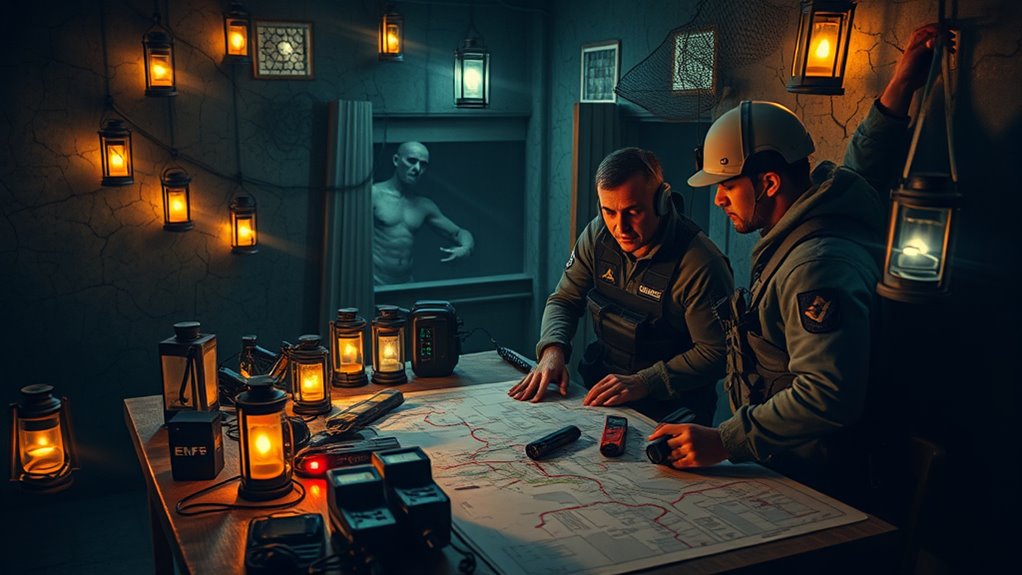
Evaluating risks in a haunted house investigation is essential for ensuring everyone’s safety and well-being. Start by identifying hazards like uneven flooring, faulty wiring, and environmental conditions that could impact comfort and equipment performance.
Assess the likelihood of injury and the severity of potential consequences. Develop a risk management plan that includes safety briefings, equipment maintenance, and team training.
Establish emergency response plans to handle any incidents effectively. Don’t forget to manage psychological risks by providing emotional support and safe spaces for breaks.
Finally, consider legal implications, ensuring informed consent and compliance with safety regulations. Regularly review and update your risk assessments to adapt to changing conditions, keeping your team safe and prepared.
Investigation Techniques and Methods
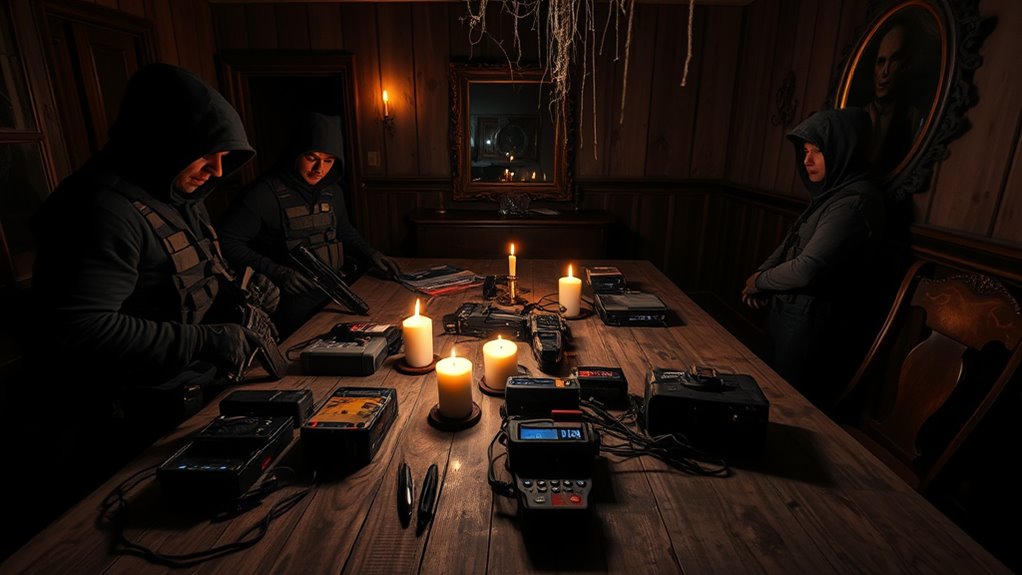
A well-planned investigation is essential for uncovering the mysteries of a haunted house.
Begin by researching the location’s history, as past events can shed light on reported phenomena. Set up necessary equipment, like EMF meters and EVP recorders, and make sure your team knows their roles during the investigation. Don’t forget to obtain legal permissions for access.
Use scientific methods like controlled experiments and baseline readings to avoid false positives. Log all data meticulously, and analyze it critically to rule out natural explanations.
Incorporate sensory deprivation techniques, such as the Estes Method, to enhance sensitivity to the environment. By combining these techniques, you’ll maximize your chances of capturing genuine paranormal activity.
Post-Investigation Analysis and Reporting
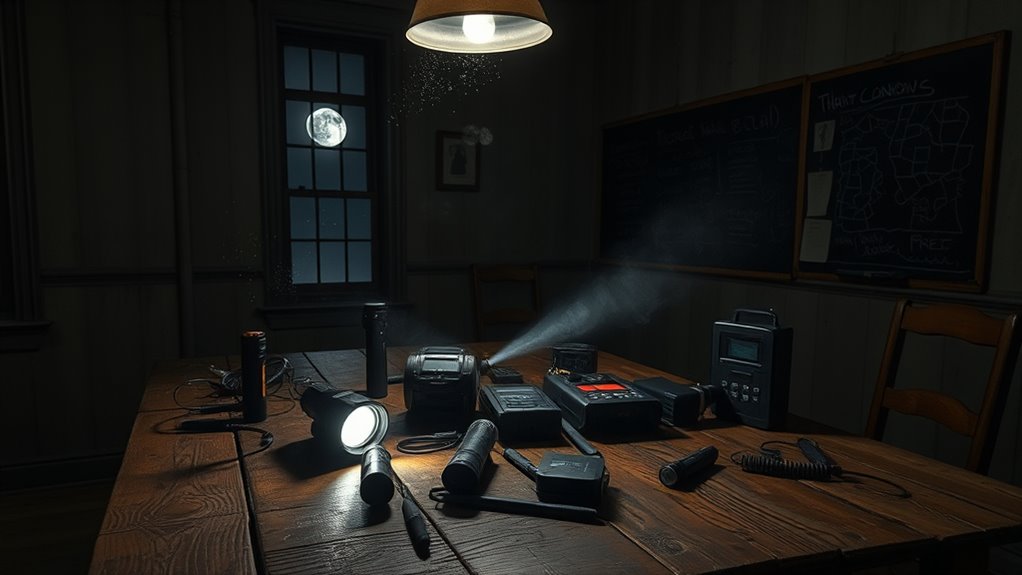
Once the investigation wraps up, it’s essential to explore a thorough post-investigation analysis to make sense of your findings.
Start by reviewing all documentation, including audio, video, and photos, to spot patterns or anomalies. Compare your findings with historical records to establish connections or discrepancies. Highlight any unusual occurrences that might indicate paranormal activity and assess your equipment’s performance for reliability.
During reporting, compile a detailed document outlining your process, findings, and conclusions, including all evidence for transparency. Communicate these results clearly to your client, addressing their questions in a follow-up session.
Encourage feedback to enhance future investigations and remain supportive as they navigate any ongoing paranormal experiences. Additionally, understanding emotional manipulation can provide valuable insights into how such experiences may impact clients’ perceptions of their encounters.
Frequently Asked Questions
How Do I Choose the Right Haunted House to Investigate?
To choose the right haunted house to investigate, start by researching the location’s history and any reported paranormal activity.
Look for places with intriguing legends or claims that pique your interest. Confirm you can access the site and obtain necessary permissions.
Think about safety concerns and gather a diverse range of equipment to capture evidence.
Finally, consider your investigation goals and how they align with the location’s reputation and reported phenomena.
What Should I Wear for a Haunted House Investigation?
When you’re gearing up for a haunted house investigation, focus on comfort and practicality.
Wear neutral colors like black to avoid reflecting light and disrupting evidence. Choose comfortable clothing that allows you to move easily, and opt for sturdy shoes to navigate the terrain.
Keep your designs discreet and avoid shiny details. Also, consider layered clothing for changing temperatures, and make certain you have secure pockets for your gear.
Are There Specific Times That Are Best for Investigations?
Yes, there are specific times that are often considered best for investigations.
Many believe that the early morning hours, especially around 3:33 a.m., are when paranormal activity peaks due to heightened spiritual energy.
Nighttime investigations can also be effective, as reduced external noise allows for clearer evidence capture.
It’s wise to avoid busy times and keep track of patterns to optimize your investigation schedule for the best chances of encountering activity.
How Do I Handle Personal Experiences During Investigations?
Did you know that nearly 60% of people report feeling uneasy in environments they believe are haunted?
When you handle personal experiences during investigations, prioritize emotional resilience. Stay grounded by documenting your feelings and observations, and lean on your team for support.
Regular debriefing sessions can help process intense experiences. Remember, maintaining objectivity is key, so collect evidence to validate what you encounter, ensuring you stay focused and informed throughout the investigation.
Can I Investigate a Haunted House Alone?
Yes, you can investigate a haunted house alone, but it’s essential to plan carefully.
Make sure you’re aware of potential hazards and know your exit routes. Bring basic tools like a camera and audio recorder, and communicate your plans with someone.
Scouting the location beforehand can help you identify risks.
Remember to stay objective and keep an open mind, as this can enhance your experience and findings during the investigation.
Conclusion
As you wrap up your haunted house investigation, remember to reflect, document, and connect. Reflect on your experiences, documenting your findings for future reference, and connecting with fellow investigators to share insights. By preparing thoroughly and using effective techniques, you’ve not only unraveled mysteries but also deepened your understanding of the paranormal. Embrace the journey, cherish the moments, and let each investigation lead you closer to the truth that lies beyond the veil.









